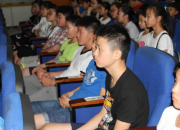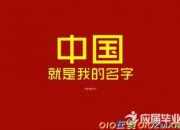河南省新乡市届高三第三次模拟测试英语试卷
时间:2021-08-31河南省新乡市2019届高三第三次模拟测试英语试卷
一、阅读理解
If you have never been on a cruise (乘船游览), it can seem like its own world—with its own rules and secret language. So here we are going to lay out the very basics of going on a cruise.
Do I need a passport to go on a cruise?
You may need a passport, but you should take one anyway. Besides the fact that you are going to need an ID card to board the ship in the first place, a lot of ports require one.
How much luggage can I take on board?
For the most part, cruise ships aren’t like planes—there isn’t a strictly regulated amount of luggage you can take with you, and you are not going to be charged for bringing too much. Keep in mind that cabin storage space can be tight.? Everything, including your empty luggage, is going to have to fit inside and you don’t want to be tripping over it for your whole vacation.
Things like guns and knives are banned, but regulations vary from ship to ship about things like irons (generally a no) and hair dryers (generally a yes). Some ships allow you to bring a bottle of wine, but nearly all ban bringing your own hard alcohol.
What’s the process for boarding a cruise ship?
Boarding a cruise ship is like boarding a plane—there are regulations or when to arrive, how to check-in, and what security you have to go through. Most cruise lines have transportation available from the airport; otherwise they normally own a paid parking lot where you can leave your car.
1.What will you have to show when you board a ship in the first place?
A. A credit card. B. A post card.
C. An ID card. D. Luggage.
2.What can you take when you are on a cruise?
A. As much alcohol as you can. B. More luggage than on a plane.
C. Less luggage than on a plane. D. As many guns and knives as you can.
3.Where does the text probably come from?
A. A storybook. B. A guidebook.
C. A book review. D. A science report.
In the western Los Angeles sits the famous city of Hollywood, known as the global center of movie studios and film stars.
The Selig Film Manufacturing Company was the first major film company to come to Hollywood, shooting its first film entitled The Heart of A Race Tout in 1908. The next year the film company built the first permanent film studio.
Although electric lights existed at that time, none were powerful enough to adequately expose film. The best source of illumination for movie production was nature sunlight. Besides the sunny weather, film producers were also drawn to Hollywood because of its open spaces and wide variety of natural scenery.
Another reason was the distance of Southern California from New Jersey, which made it more difficult for Thomas Edison to enforce his film patents. At that time, Edison owned almost all the patents relevant to film production. As a result, in the East, movie producers acting independently out of Edison’s Motion Picture Patents Company were often accused by Edison. But in Los Angeles, things were different. If he sent his men to California, word would usually reach Los Angeles before they did and the movie makers could escape to nearby Mexico.
In 1911, a second movie studio—Nestor Studios, was founded. At about the same time, many film production companies from New York and New Jersey started moving to sunny California because of the good weather.
The first Academy Awards presentation ceremony took place in 1929 in the Hollywood Roosevelt Hotel. Tickets were $10 and there were 250 people attending the ceremony.
From about 1930, five major “Hollywood” movie studios in Hollywood, Paramount, RKO, 20th Century Fox, Metro-Goldwyn-Mayer and Warner Bros, owned almost all large theatres throughout the country for the exhibition of their movies. The period between the years 1927 to 1984 was considered the “Golden Age of Hollywood”.
1.The word “illumination” in the third paragraph can be replaced by ________.
A. light B. story
C. patent D. film
2.According to the text, film producers were drawn to Hollywood for the following reasons EXCEPT ________.
A. open spaces B. various scenery
C. unique culture D. sunny weather
3.What can we infer from paragraph 4?
A. Thomas Edison moved his office to Hollywood to enforce his film patents.
B. Movie producers working on the West Coast were never accused by Edison.
C. Edison’s Motion Picture Patents Company owned many studios in Hollywood.
D. Movie makers in Los Angeles could work independently out of Edison’s control.
4.What do we know about the first Academy Awards presentation ceremony?
A. It was held in a restaurant.
B. There were 250 people receiving the awards.
C. There were 250 people present at the ceremony.
D. It was held by five major “Hollywood” movie studios.
In the space of just two years, the app Douyin, created by Beijing-based company ByteDance, has gathered more than half a billion users—around 40% of them outside China—who share short videos of themselves lip-syncing (假唱), cooking, dancing or just being silly. What sets ByteDance apart is its success in the social media category, which is controlled by Facebook, Twitter and Snap—all Western companies.
ByteDance calls itself an artificial intelligence company. It uses machine learning and algorithms (算法) to figure out what people like most and give them more of what they want to see. On Douyin, people can edit and beautify 15-second videos before posting them online. The app has even made a phrase to describe people glued to their customized feeds: “shua Douyin” or “scrolling through Douyin”.? Last year, the company released TikTok, the overseas version of Douyin. ByteDance’s growing video empire has made it the world’s fifth biggest app maker. ByteDance says TikTok and Douyin together have more than 500 million monthly active users.
Investors like ByteDance because its hundreds of millions of users attract a lot of advertising money. The video apps are lucrative because they attract a lot of users in their teens and 20s, who are more generous with the money. ByteDance also makes money through income sharing deals. People on TikTok, for example, can buy digital coins to give to other people on the app—like throwing money in a performer’s tip jar. ByteDance takes a cut of those earnings.
ByteDance’s founder and CEO is Zhang Yiming, a 35-year-old former Microsoft employee. People who have worked with Zhang describe him as someone who thinks deeply about technology and spends much of his free time writing code.











